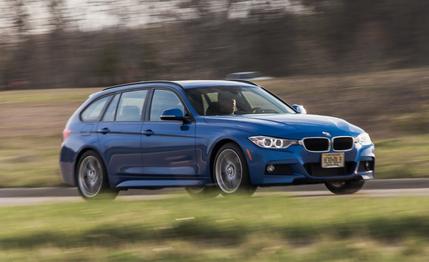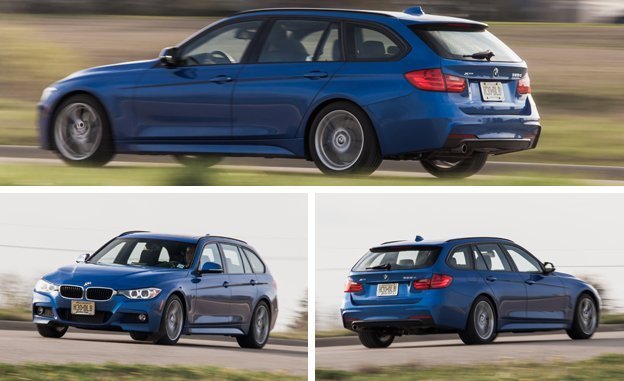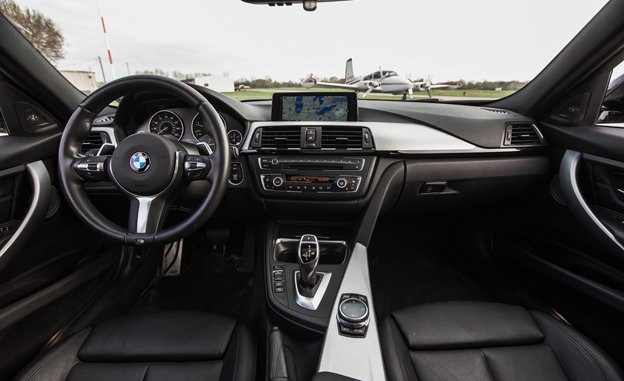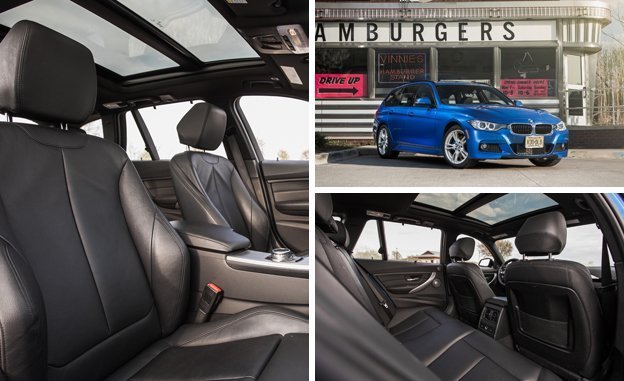 Long-Term Road Test Wrap-Up
Long-Term Road Test Wrap-Up
Say the words “diesel station wagon” around a group of European enthusiasts and they’ll yawn. Do the same thing in America, though, where such cars are exceedingly rare, and rivulets of sweat form on foreheads. Pulses quicken. Eyes widen. We should know—this happens to us. It’s because diesel wagons play into an automotive fantasy: the do-it-all vehicle that delivers great fuel economy, sedanlike dynamics, and enough utility to perhaps permanently stave off the purchase of a soul-crushing minivan or crossover. So it was pretty obvious which body style we’d spec when we were offered a chance to put 40,000 miles on a 3-series with BMW’s latest four-cylinder diesel engine.
With the red mist of capacious, compression-ignition cars filling our eyes, we gleefully ignored the fact that essentially everything appealing about the 328d xDrive Sports Wagon is available for its relatively sensible $44,000 base price: all-wheel drive (rear-drive isn’t offered in the U.S.-spec wagon), diesel efficiency, enlarged cargo capacity, and plenty of luxury features. We needed more, dammit.

So in went the $3850 M Sport package (18-inch wheels and performance tires, sport seats, M steering wheel, black-out exterior trim, aluminum interior trim, black headliner, and a body kit), which allowed us to select the $550 Estoril Blue paint. We then added $650 M Sport brakes, $250 rear sunshades, $875 Harman/Kardon surround sound, and a $750 camera setup to see 360 degrees around the car, because apparently we lack necks with which to turn our heads. But, oh, that’s not all! There were also six additional packages—for the full rundown, head to our intro story—that totaled more than $9000. We didn’t stop ticking boxes until the thing cost almost 60 grand, an eye-watering level that almost never failed, justifiably, to garner a mention in the logbook. (One logbook commenter went so far as to call this particular car “the single-most salesproof BMW in America,” although we had an unprecedented number of readers and staffers inquire about purchasing the vehicle from BMW after the test.)
Yet for all the squealing about the price, the diesel four-cylinder engine came in for the most complaints, on account of its lack of refinement, loudness at low speeds, and uneven power delivery. Its coarse nature came to the fore at every stoplight, as the fuel-saving automatic stop-start feature relit the engine with a pronounced shudder and audible gruffness. The engine was derided as unbefitting any vehicle in this segment, much less one with an MSRP as high as ours. Some tried to make excuses: “You don’t notice it when you’re cruising, only when you’re accelerating!” Which is, well, a lot of the time. Volkswagen, Audi, and Mercedes all offer better-behaved diesel fours, although only VW puts theirs into a proper wagon. Ordering BMW’s gasoline-powered turbo four in the wagon would eliminate the most egregious of the issues, and it would also provide the benefit of a more widely available and price-stable fuel.
The diesel engine was potent enough for everyday commuting, however, with its 280 lb-ft of torque giving a sprightly feel off the line and the launch-control program—yes, this wagon has launch control—enabling a 7.0-second final zero-to-60 run, 0.1-second quicker than when it was delivered. The engine improved a bit more at higher velocities, gaining 0.7 second to 100 mph by the end of the test. But few could forgive the diesel’s “can of gravel” racket, even as they appreciated its thrift and long range on highway cruises.

Indeed, the BMW went far and wide on our side of the Mississippi, making frequent jaunts to northern Michigan, Chicago, Pennsylvania, and New England, as well as one-off trips to Virginia as a Lightning Lap support vehicle, to Nashville, and to northern Wisconsin. The highway miles helped enable a very respectable 35-mpg average for the 40,000-mile test, which is even more impressive considering most of those trips involved multiple passengers and a cargo hold full of gear. (Our mileage might have been a smidge higher, too, if we hadn’t disabled the stop-start function for much of the test.)
Other qualities contributed to the filled-up sign-out sheet: a highway range that easily topped 500 miles between refueling stops, good forward visibility, crisp handling, a well-sorted chassis—outside of the numb steering—and a comfortable ride, even with our M Sport car’s more aggressive suspension, larger wheels, and run-flat performance rubber. The car also was an all-weather tank, with the xDrive all-wheel-drive system combining with a set of Pirelli Sottozero winter tires to make the BMW virtually unstoppable when the snow was flying.
Unfortunately, the xDrive setup also had problems, as the transfer case went bad and needed to be replaced at 25,000 miles (more details on the fix here). We had other reliability issues, too. For the first half of its stay, the 328d repeatedly warned us of excessively worn brake pads and required multiple service visits to track down the cause; a worn pad-level sensor threw the false alarms, and we did not need to replace the brake pads during our time with the car. Early on, one of the headlamp-leveling sensors failed and caused the lights to dip extremely low and go into “truffle-hunting mode,” as it was termed. The interior, which wore well otherwise despite heavy use, also developed some small rattles. We were to blame for a broken right-rear sunshade; someone ripped off the pull tab, causing the shade to drop into the door.

All of the problems were fixed under warranty, and since service (oil changes, inspections, diesel exhaust-treatment fluid refills, etc.) is included with all BMWs for four years or 50,000 miles, our out-of-pocket outlay for the test was zilch. Still, as we wrote in a previous update, the gremlins were frequent enough to remind us why one should avoid BMWs that are out of warranty.
Would we be more forgiving if the car had been perfectly reliable, or if we had been more judicious with the options? Perhaps. But the fact is that the source of the most grumbling—the unrefined and clattery diesel engine—comes standard, and the car’s efficiency, everyday livability, and dynamic goodness weren’t enough to call our diesel-wagon fantasy completely fulfilled.
Months in Fleet: 14 months
Final Mileage: 41,208 miles Average Fuel Economy: 35 mpg
Fuel Tank Size: 15.0 gal Fuel Range: 525 miles
Service: $0 Normal Wear: $0 Repair: $0
Damage and Destruction: $0 Unscheduled Urea-Solution Additions: $0